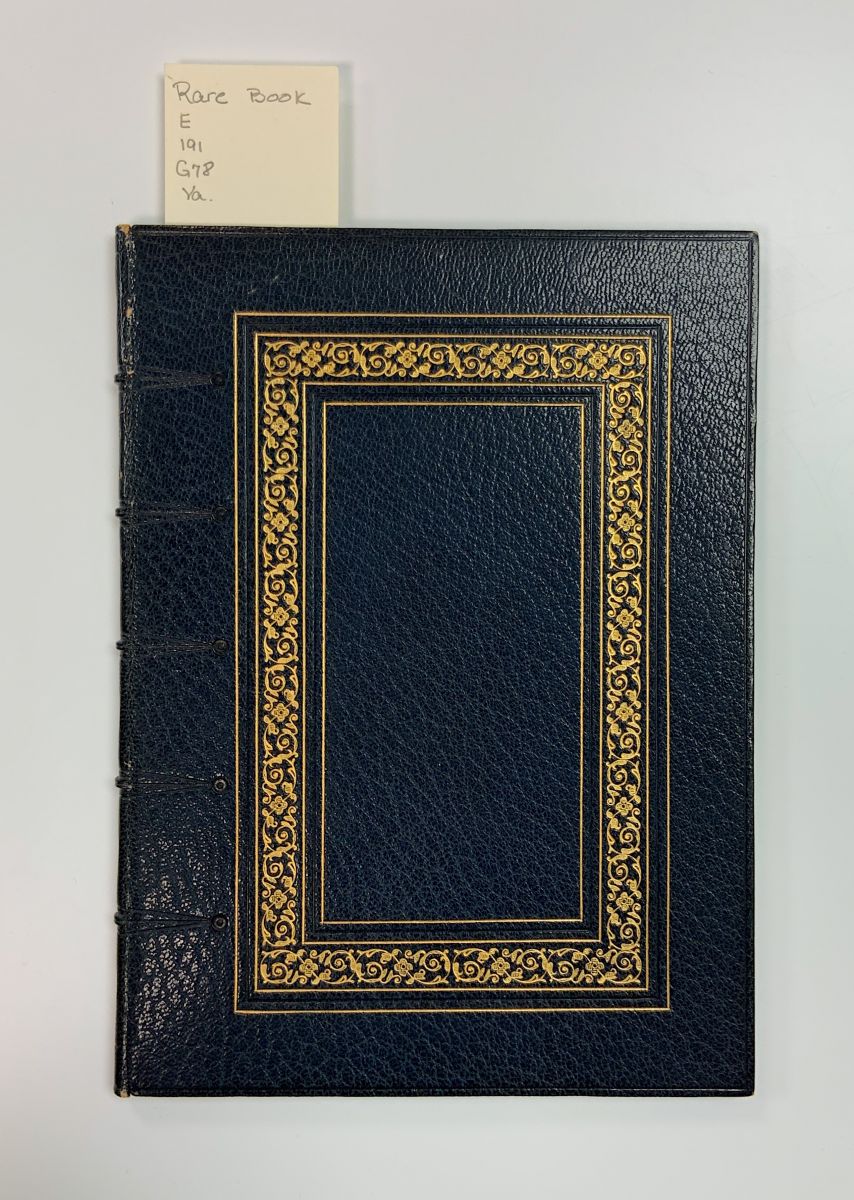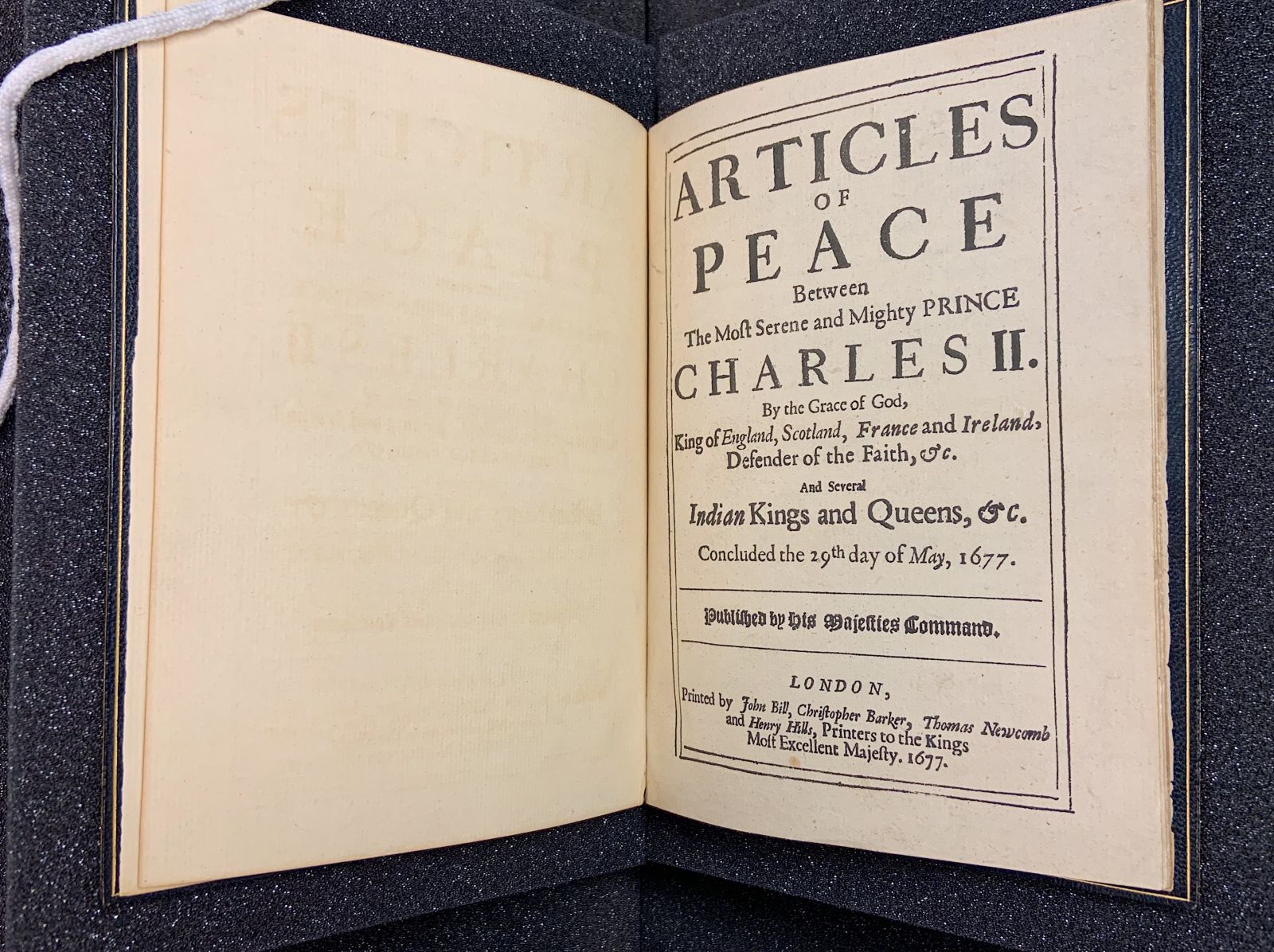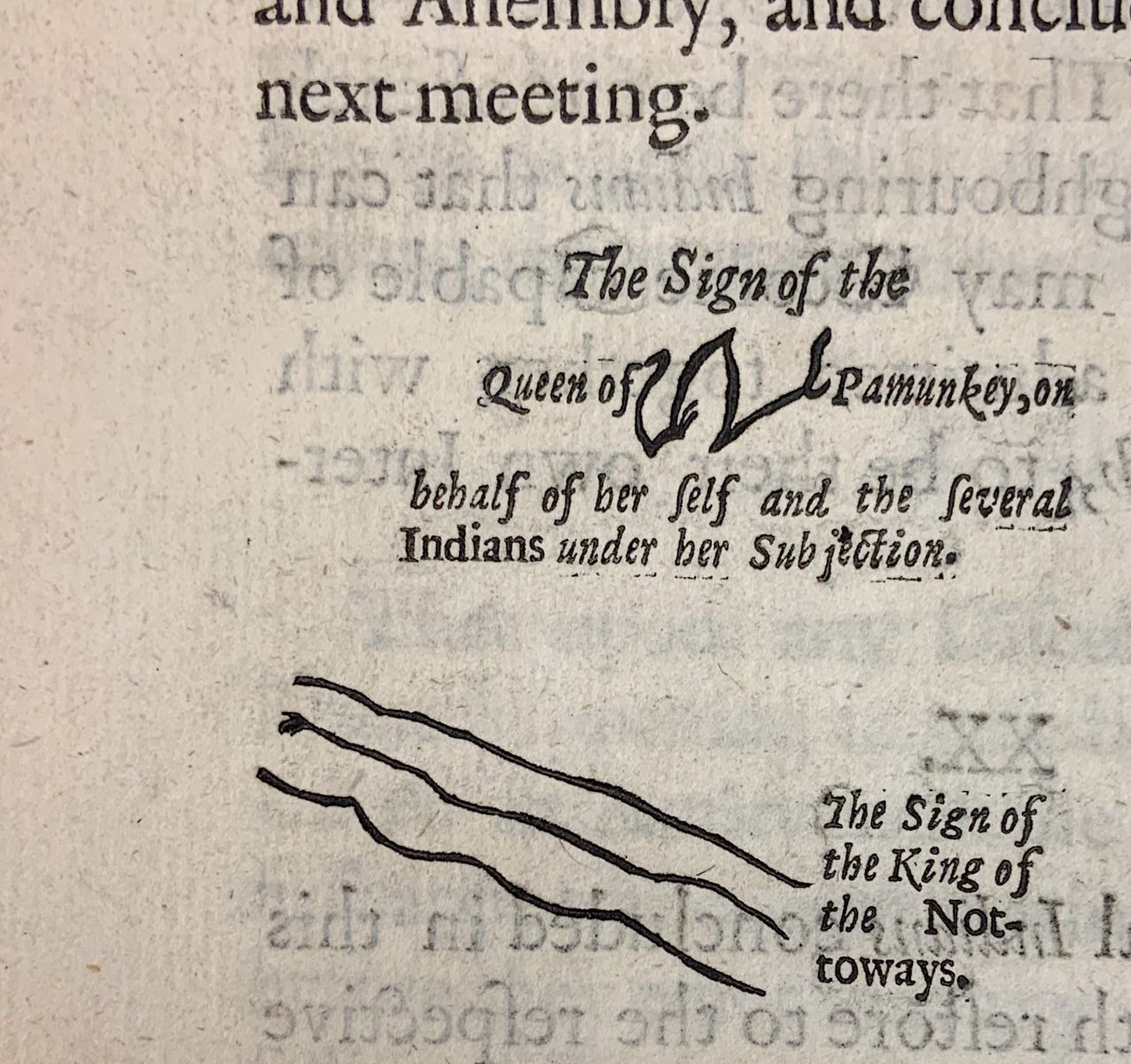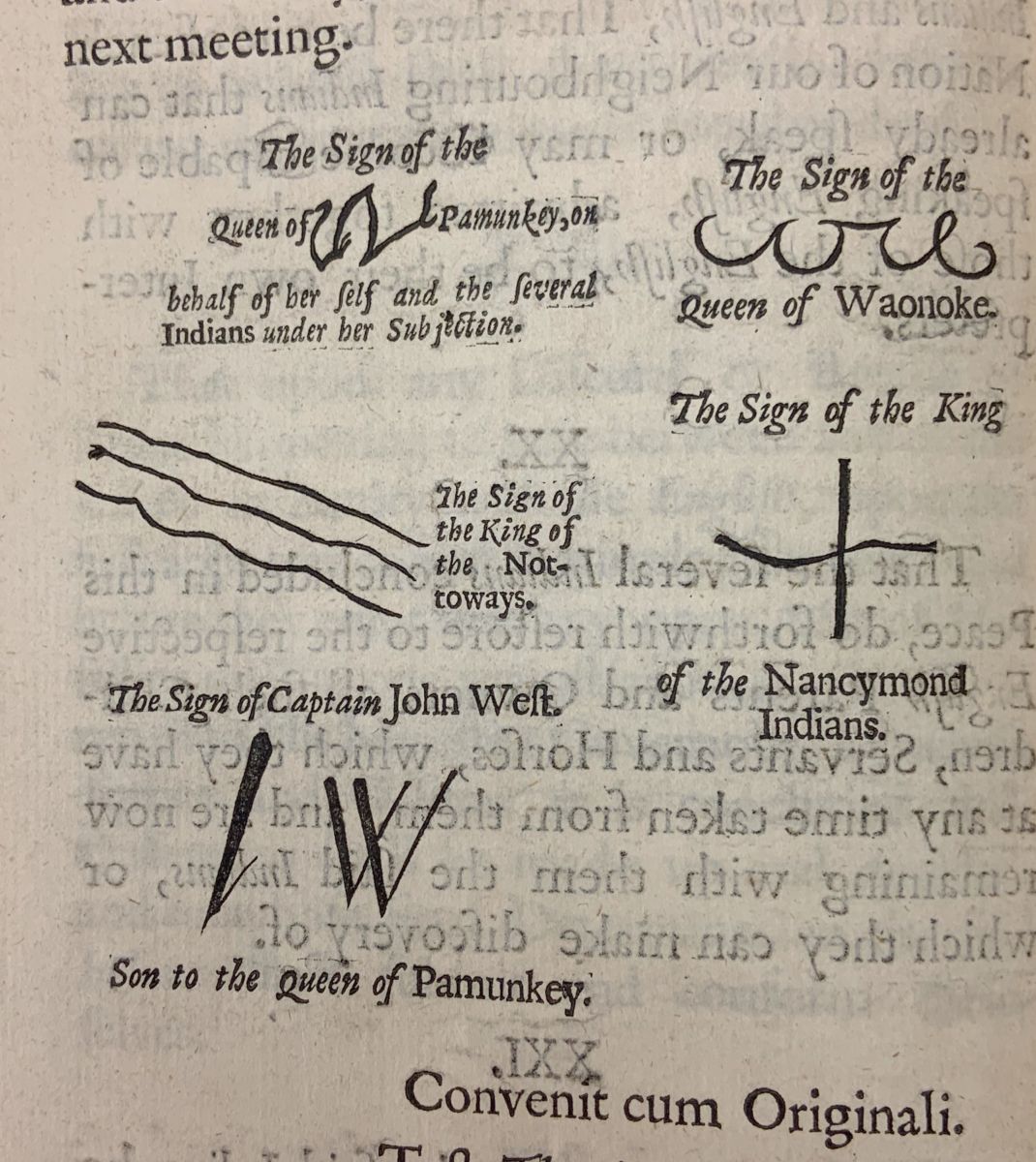 Exterior of Articles of Peace, 1677 (E191 .G78)
Exterior of Articles of Peace, 1677 (E191 .G78)We're publishing a series of blog posts written by students for the class HIST 211 Books: Technology and Culture. Their posts are based on materials in the Special Collections Research Center. Check out their bright insights every other week. Today's entry is written by Meghan Ward. Read on to learn more about the British colonialists' interactions with Native Virginia tribes and the intersections of early Native American history and print culture.
The year was 1676 and Nathaniel Bacon, a wealthy farmer who had moved to Middle Plantation, Virginia, modern-day Williamsburg, from England, along with many of his fellow colonists, did not trust the Virginia Indians living near him. Tensions that had been sparked by small Native raids and other disputes between the two groups were exacerbated by a perceived indifference towards the situation from the Virginian government, and soon developed into a full blown rebellion lead by Bacon himself. Bacon’s makeshift army marched on Indian forts and murdered both the prisoners held there and the uninvolved families who lived there. They continued to attack the Virginian Indians until Bacon’s death in October of the same year.
 Title page of an original printing of the Articles of Peace, 1677 (E191 .G78)
Title page of an original printing of the Articles of Peace, 1677 (E191 .G78)In response to these raids, many of the Indian kings and queens of Virginia turned to the British Crown, seeking protection for their tribes. In exchange for this security they would declare the sovereignty of the monarchy. This agreement was formalized in the Articles of Peace Between the Most Serene and Mighty Prince Charles II. By the Grace of God, King of England, Scotland, France and Ireland, Defender of the Faith, &c. And Several Indian Kings and Queens, &c, also known as “The Treaty of Middle Plantation” (E191 .G78).
The treaty aimed to establish “a good and just Peace” with those Native tribes that had been deemed “peaceful.” Included in the twenty-one articles are decrees that the Virginia tribes shall “hold their lands,” no English shall encroach on tribal land, no “Indian King or Queen be imprisoned without a special Warrant from His Majesties Governour and Two of the Council,” and that there be “one of each Nation of our Neighboring Indians that can already speak, or may become capable of speaking English.”
 Signatures of the Queen of Pamunkey and King of the Nottoways
Signatures of the Queen of Pamunkey and King of the NottowaysThe Special Collections Research Center has an original 1677 printing of this copy, made by “the printers to the King’s Most Excellent Majesty.” One of the most fascinating and important features of the physical volume are the signatures of the Virginia Indian kings and queens. This distinct signatures, also known as totem marks, of the leaders are included, presumably with the use of woodcut blocks, on the last few pages. According to this printed agreement, each Native leader signed their consent to the Articles with their own unique icon.
For example, the King of the Nottoways signed with three wavy parallel lines and the King of the Nancymond Indians signed with a cross-shaped marking. With these marks, the Native American rulers gained safety for their people, but they also signed away some of their autonomy. They were beholden to the agreements in the Articles of Peace and, therefore, to the British monarchy. The presentation, format, and language of this agreement, published in Great Britain, conforms to Eurocentric, imperialistic views that are perhaps incongruent with the customs, rights, and desires of the Native peoples—leaving us to question just how consensual these signatures are. While this document is short and fairly simple, it remains yet another example of the ways the Europeans used print and language to both build relationships with and exert control over the Native peoples.
 A complete view of the Articles' signatories
A complete view of the Articles' signatories
References and More to Explore:
Completely digitized version of the Articles of Peace, available through William & Mary Libraries' Digital Archive.
Library catalog entry for Articles of Peace Between the Most Serene and Mighty Prince Charles II. By the Grace of God, King of England, Scotland, France and Ireland, Defender of the Faith, &c. And Several Indian Kings and Queens, &c., 1677 (E 191 .G78 Rare Books).
Library catalog entry for the facsimile copy of the Articles of Peace (E191 .G78 1677a) also available in the Special Collections Research Center. Please note that researchers may be serviced the facsimile copy to best preserve our original edition.
“Bacon's Rebellion.” The Reader's Companion to American History, edited by Eric Foner, and John Arthur Garraty, Houghton Mifflin, 1st edition, 2014. Credo Reference. Accessed 17 Nov. 2018.
“Chapter 13: Rebellion.” American Slavery, American Freedom, Edmund Morgan. PDF Document. Accessed 17 Nov. 2018.
“Mattaponi.” Virginia Department of Education, n.d.
“Middle Plantation Treaty of 1677.” Powhatan Museum of Indigenous Arts and Culture, n.d. http://www.powhatanmuseum.com/Historic_Documents.html